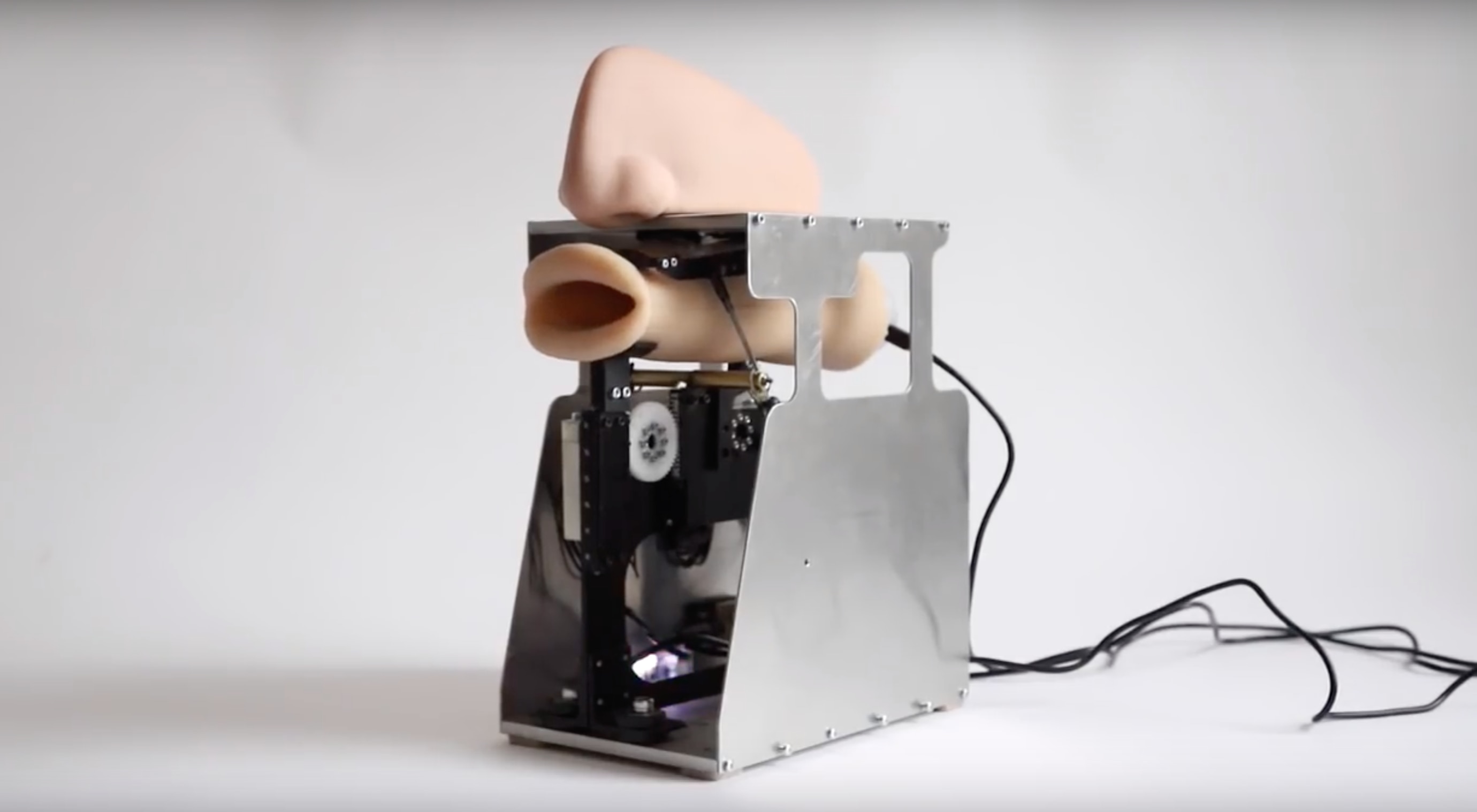Create a free profile to get unlimited access to exclusive videos, sweepstakes, and more!
Headless, eyeless robot mouth powered by AI says random prayers in Amazon’s Kendra voice

Say you’re wandering around a contemporary art museum, and you hear a random voice echoing from somewhere. But wait... that voice isn’t human, and it could say anything next, in any language, so long as it’s some sort of prayer.
“The Prayer” — a robotic silicone nose and mouth that sings random and often imperfect prayers — is the latest brainchild of futuristic artist Diemut Strebe. It currently resides at the Centre Pompidou in Paris, and has been programmed with an algorithm that has it reciting prayers nonstop. They don’t always make sense, but they don’t need to.
Strebe is no stranger to creating things meant to blow your mind (and even her own). She previously worked with scientists to regrow Van Gogh’s disembodied ear using a 3D printer and DNA from a distant relative of the late artist. For “The Prayer,” Striebe, who is a visiting artist at MIT, enlisted the help of a team from the school’s computer science and AI lab. The team there helped her create an algorithm that was based on diverse religious texts and prayers.
To make AI do seemingly impossible things, you have to train it. The texts and prayers Strebe provided were used to teach an OpenAI language processing model. It took some patience, but the program was finally able to just generate prayers autonomously. A text-to-speech program gave it the ability to speak, as well as its voice, which you might recognize as Amazon’s Kendra.
Take that, sync everything up with the eerily human nose and mouth, and you have a piece of art that will mesmerize most museum-goers and possibly startle a few. Nobody knows what “The Prayer” will say next. It tends to get the syntax right, but often spouts nonsense words that only sound like a legit prayer.
Striebe was inspired to create this unusual piece by her views on how philosophy crosses paths with AI, and the sci-fi places it could possibly take humanity. Could AI ever feel emotions? Dream? Have a divine epiphany? Maybe Striebe’s next project will prove it.
(via Motherboard)


























